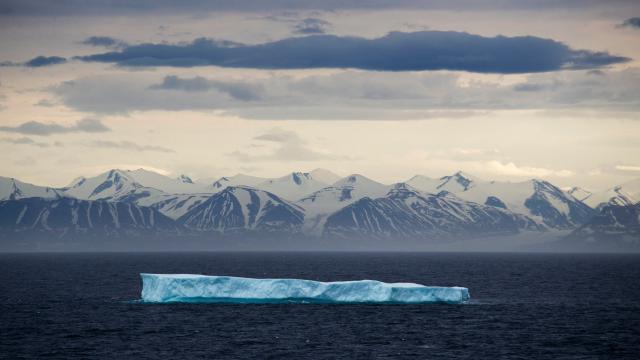The ozone hole was caused by chemicals formerly used in air conditioners and refrigerators. But new research shows that the same stuff is also behind half of the warming the Arctic experienced between 1955 and 2005.
The study, published in Nature Climate Change on Monday, uses a number of climate models to figure out how much these substances have impacted the Arctic’s temperature rise, as well as sea ice loss. If there’s any silver lining, it shows that the efforts to phase them out in the late 1980s was a good idea for the ozone layer and the climate.
Researchers used 1955 as a jumping off point because the use of ozone-depleting substances like chlorofluorocarbons and hydrochlorofluorocarbons as refrigerants rose steeply thereafter. They ran the models under two scenarios. In one, emissions followed the trajectory they did over the next 50 years while in another, ozone-depleting substances were kept at 1955 levels. The results showed that under the business as usual scenario, the annual average global temperature increased by 0.59 degrees Celsius (1.1 degrees Fahrenheit). However, in the models without these substances, the increase was only 0.39 degrees Celsius (0.7 degrees Fahrenheit). That means that these substances are responsible for a third of global warming during this time period.
[referenced url=” thumb=” title=” excerpt=”]
In the Arctic, though, the warming is more severe and the impacts of cutting the chemicals even more dramatic. The temperature increase in the Arctic was 1.59 degrees Celsius (2.9 degrees Fahrenheit) over the 50 years with ozone-depleting chemical emissions. But steadying them at 1955 levels only produced 0.8 degrees Celsius (1.4 degrees Fahrenheit) of warming, a marked reduction.
The impact of stopping ozone-depleting substances from rising extended well beyond air temperatures. The study attributes half of the Arctic sea ice loss in September—the month when Arctic sea ice losses are greatest—to these substances over the 50-year period of the study.
The Montreal Protocol was ratified in 1989 in response the worsening ozone hole. The purpose was to phase out these chemicals, and it has largely worked outside a hiccup or two. That means the ozone hole is likely to heal this century. The new research indicatse that the phaseout might also helped prevent further extreme warming in the Arctic, though some of the replacement refrigerants are pretty powerful greenhouse gases, too. Which, you know, maybe we should stop emitting those, too.
